Some time ago I had the opportunity to purchase many old traditional templates from the last Schwalm template maker, Ludwig Schmerer. Among these templates were some for the bottoms of the caps.
I enthusiastically looked for a contemporary use for the patterns. The oval shape of the cap bottom templates brought forth the idea to create Easter eggs. My graphic designer transferred the oval to an egg shape and created ten richly diverse drawings. I present the first of these this year.
Unfortunately, I do not have in my collection an original cap with this exact pattern, but I do have a couple of caps with parts of the same design.
They are embroidered with silk threads in different colours
and sometimes also include gold and silver bullion.
In the past, to achieve a precise rendering of the single pattern segments, a special paperboard was inserted.
Unfortunately, I had neither a matching template nor the tools to make such a template. So I looked for alternatives.
A template made from a sheet of craft foam is easy to make and comfortable to work with,
but, unfortunately, it is unsuitable because the thread gets lost in the soft material, and the edges end up looking jagged.
For my second attempt, I made a template using a craft knife and thick paper (image below: back side).
After cutting out the template, I basted it to the fabric.
Afterwards, all single sections that I wanted to embroider were fastened to the ground fabric and then covered with densely placed stitches.
I used green linen fabric and – due to the lack of silk threads –
stranded cotton (Anchor 875, 876, 1022, 1023, and 1024).
Using 2 strands of the 6-ply stranded cotton, the sections of the templates were embroidered along the cut lines in two steps – using a stabbing motion instead of a scooping motion. I thought this tedious.
Through my experimenting, I figured out that it is much easier to first withdraw the paper sections that will not be embroidered. In that way, it is much easier to embroider the remaining sections.
In the end, I was passably satisfied.
The single design sections are clearly distinct, but some of the stitches should have been worked more densely.
I liked the cut out egg decorated on a light ground more.
And so a second attempt was begun. The design was transferred to natural linen using an iron transfer method. It was embroidered in the style of the Schwalm crowns with the same colours as the first egg but in a different layout.
On the fine densely woven linen, the stitches could be placed closely and exactly together.
Embroidering this way was less tedious and much faster. But in comparing the two examples, the one stitched upon the template is more dimensional and is much more distinct.
So, at the next opportunity, I will begin a third attempt making a paperboard template in the way Schwalm people used for colour embroidery. And I will use silk threads.
I find the siena colours from the Werkstatt für historische Stickmuster fairly good.
With other colour combinations, one can achieve – as the following drawings show – totally different effects.
Please give it a try using your own favorite colours; I look forward to seeing your results.
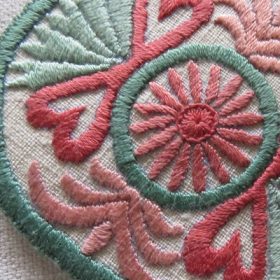
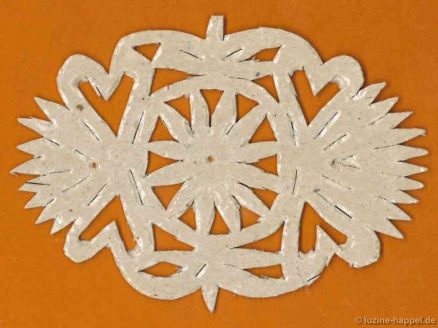
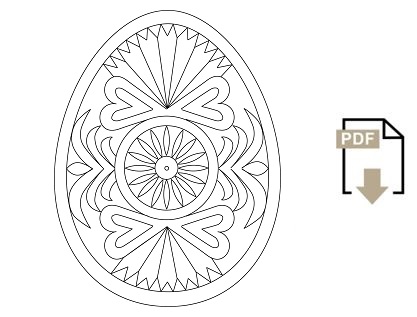
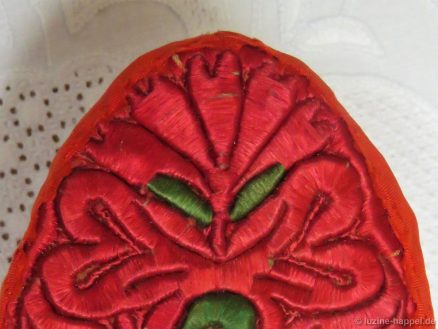
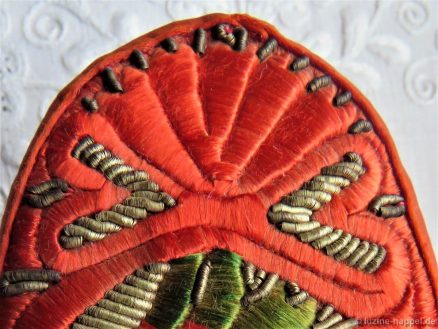
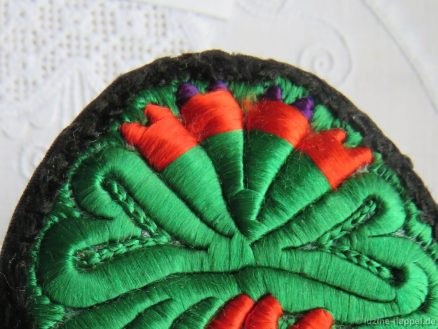
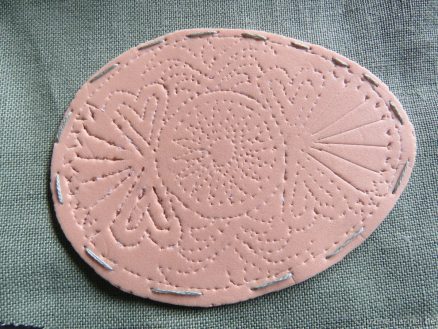
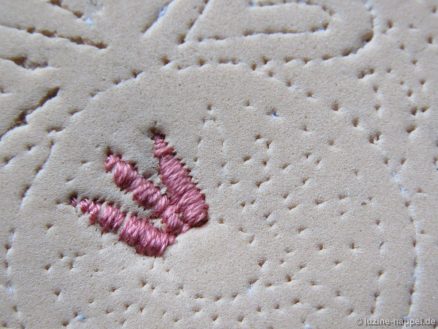
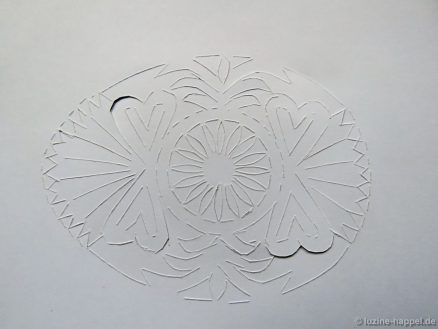

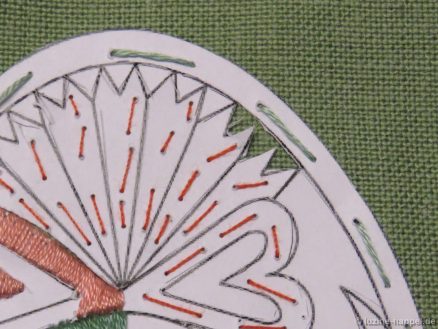
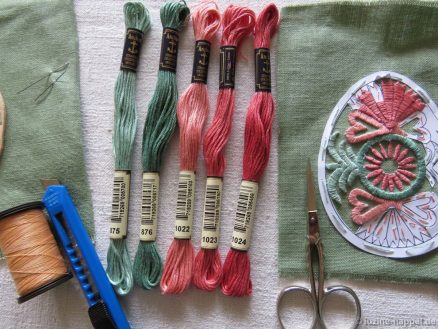
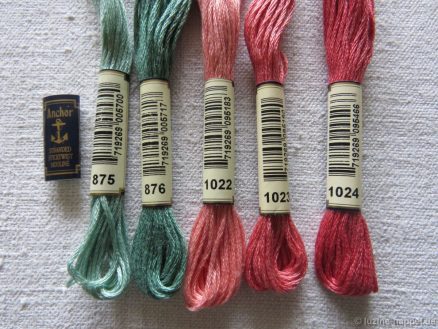
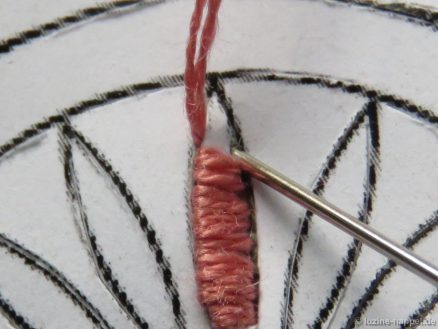
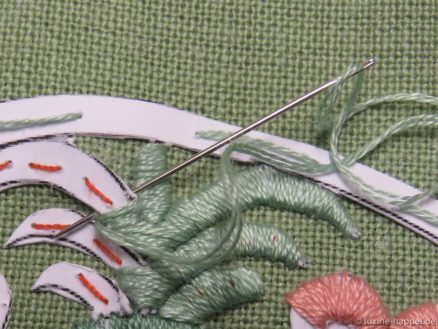
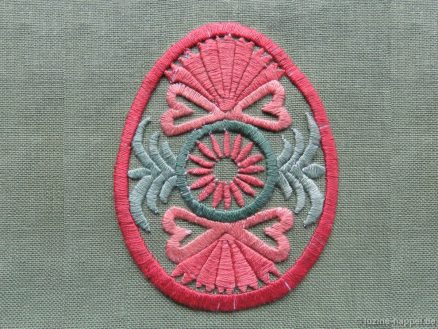
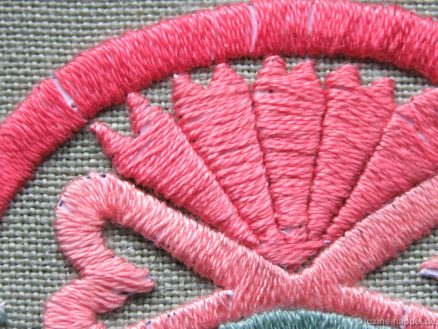
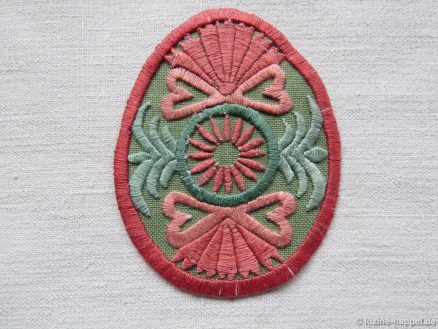
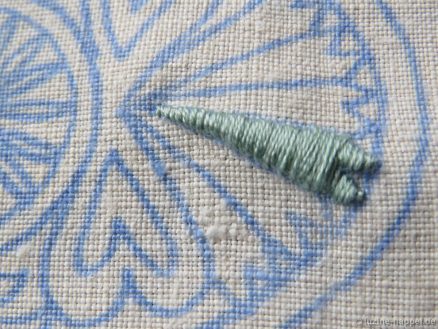
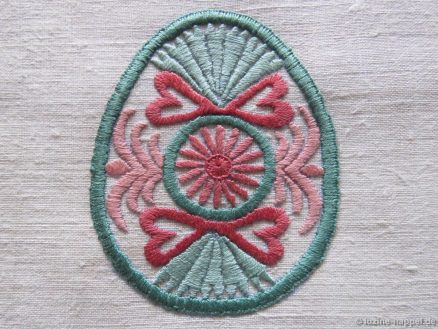
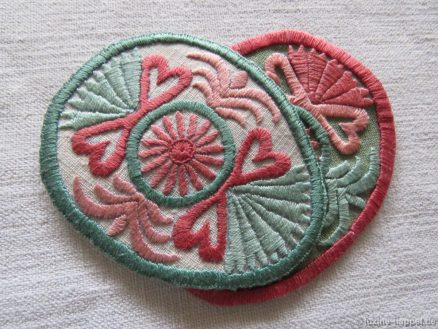
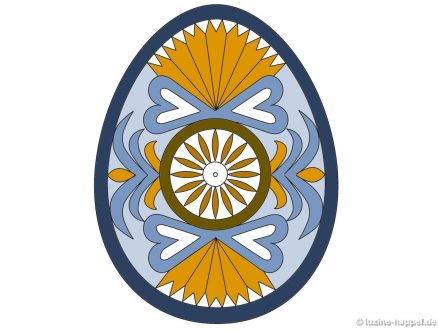
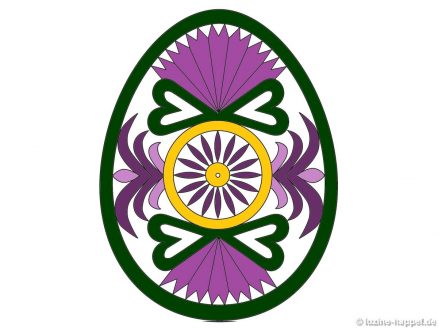
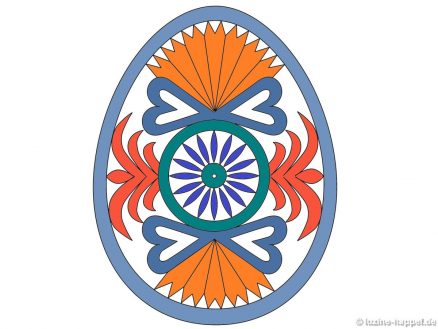
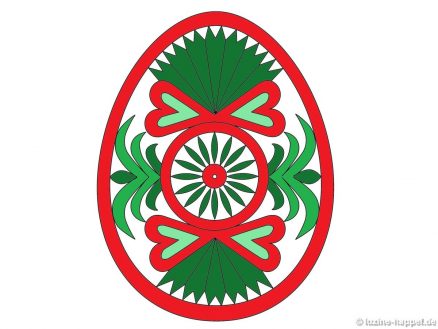
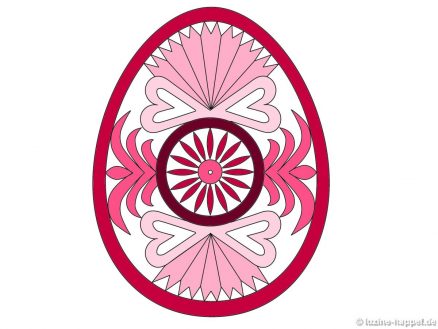
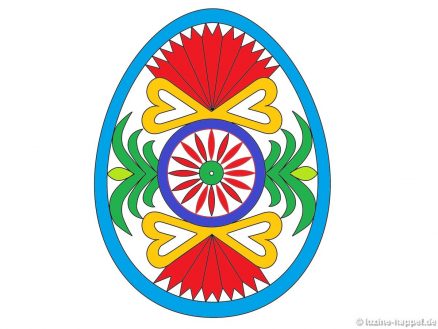
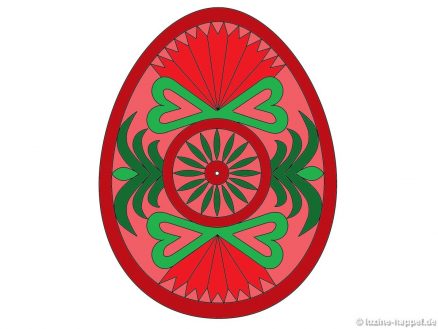
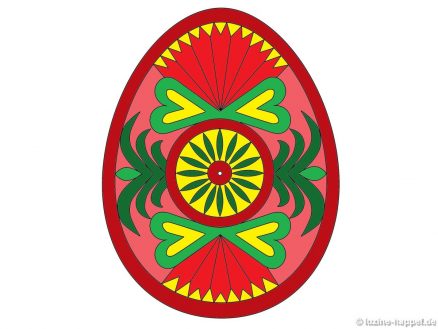
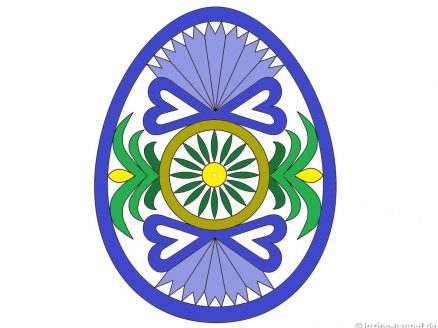


Leave a Reply